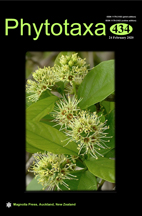Abstract
Khuzestan province covers an area of 64236 square kilometers in the southwest of Iran and the border of Iraq. The area belongs to two regions, Irano-Turanian (IT) in the north and Sahara-Sindian in the south. An area with 349254 ha is the source of dust in Khuz province. We investigated the floristic composition, life-form spectrum and the phytogeography of the area during 2009–2018 by collecting vascular plants to provide an annotated checklist of the plants in Khuz province. In this time about two years focused on the vegetation of the septet areas of the source of dust and dune. Approximately 10,000 vascular plant specimens were collected from 13 types of terrestrial habitats and 15 types of wetlands. A total of 985 species and infraspecific taxa of vascular plants belonging to 487 genera and 93 plant families were recorded as native and naturalized in the study area. The richest families are Asteraceae (62 genera/132 species), Fabaceae (22/79), Poaceae (43/68), Brassicaceae (43/58), Lamiaceae (19/48), and Apiaceae (30/45). The genera Astragalus (20 species) and Convolvulus (14 species) are the most species-rich in Khuz. Raunkiaer’s plant life-form spectrum in the area is dominated by therophytes (33%) and hemicryptophytes (29%). The core flora of Khuz has the Irano-Turanian origin; the widespread elements are also well represented in the study area. The dust sources area includes four types of vegetation: wetland species, hygrophyte plants, terrestrial halophytes, and psammophytic plants. The main sources of dust rise are covered with two classes of vegetation (halophytes and pasmophytes), with 77 dune species, 43 species of salty soil places, and 28 species adapted to both climate and soil of the area.

